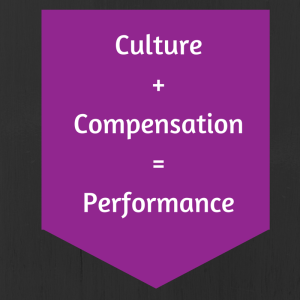Mary E. Marshall's Blog, page 34
September 22, 2015
Leadership or Merely In the Lead?
 I was having a conversation with a CEO this week and we were debating the meaning of “leader” and “leadership.” His contention was that because he was the designated leader of the company, he was exhibiting leadership. When I asked him to define what that meant to him, he circled back, saying he was the leader. The reason we were having the conversation was that he was having trouble getting his team to follow his lead.
I was having a conversation with a CEO this week and we were debating the meaning of “leader” and “leadership.” His contention was that because he was the designated leader of the company, he was exhibiting leadership. When I asked him to define what that meant to him, he circled back, saying he was the leader. The reason we were having the conversation was that he was having trouble getting his team to follow his lead.
I think there are numerous examples today of those who are in the position of leader, however, they are not exhibiting leadership. This is true in politics, in business, in religion and in almost every aspect of our daily lives. In my mind, leadership is about inspiring others to join together to achieve something, or do something. It’s about getting out of the way so that everyone can contribute, and feel included and that what is being achieved as a collective is more than one could alone. I’m not talking about socialism but about inspiration and shared vision.
Everyone can think of that leader who made you want to do something you never thought you could, who inspired you to greatness or mentored you in a way that you needed right at that time. Those are the kinds of business leaders we need today. Unfortunately, in all aspects of life, this kind of leadership is something of a rarity. The current Pope is actually an example of what I am talking about. He has not tried to make the papacy about him, he has tried to make it about doing the right thing, and changing opinions of the collective for the greater good. Donald Trump is an example of the opposite of this. He is the type who is only interested in his own self-aggrandizement or leading, not in leadership.
Entrepreneurs usually start out in the first camp because their initial idea has inspired them and likely is inspiring to others too, but true leadership is more than a business idea or a philosophy, it’s about inspiring others to also have ideas, to join the team, to be and do more. Somewhere along the entrepreneurial road, this gets lost and it becomes “do it this way,” and “I’m the leader because my title says so.” Founders sometimes don’t make the best leaders, but the smart ones realize this and bring in someone who is a great leader. It’s about getting across the finish line, a great leader crosses with his or her team.
Your company may be a leader in your industry or category, this doesn’t mean you have shown leadership as the company’s leader. It means your business got into position first or at present it is the best or the biggest. This is different than leadership. True leadership shows the team how to stay in front and inspires them to give their best to do so.
The post Leadership or Merely In the Lead? appeared first on Mary Marshall // CEO Coach.
September 15, 2015
What’s Your “Unconscious Normal?”
 The other day as I was meeting with a client he was expressing frustration with the differences in cultures within his workforce and the problems it has been causing the company. Although he has tried many things, nothing seems to be able to bridge the beliefs that his employees have about themselves and one another.
The other day as I was meeting with a client he was expressing frustration with the differences in cultures within his workforce and the problems it has been causing the company. Although he has tried many things, nothing seems to be able to bridge the beliefs that his employees have about themselves and one another.
Rather than try to solve the problem at that moment, I got to thinking about why this was happening not just at his company, but seemingly everywhere these days. There is so much discord over race, beliefs and politics that there doesn’t seem to be much room for conversation to arrive at solutions. Instead there is a lot of rhetoric about why one view is “right” and another “wrong.” The reality is that at a high level, points-of-view are neither right nor wrong, they are simply different perspectives that each believes to be the right one. I am going to call this phenomenon the “unconscious normal.” We are so polarized these days, (and I believe it has a lot to do with the constant barrage of media in all forms), and we look for justification for our point-of-view, or unconscious normal, and rarely consider any others.
I once heard someone say that rather than change our beliefs or viewpoint, we go to work finding facts to reinforce our point-of-view. This is a result of our socialization which then forms our unconscious normal. Many countries’ populations grow up believing another culture or race is bad or wrong, and because of this focus they will find evidence that validates their perspective. If you grew up with very little money but were happy, this was your normal, if unhappy, that was yours. Even if our experiences weren’t ideal, it’s what we knew. Some go on to learn more, gather more data and realize that what they were taught might have been short-sighted and change their point-of-view. Take climate change as an example, there are some who absolutely refuse to believe the science and there are others who think we’re on the cusp of disaster. Somewhere in the middle is likely the real truth. Until we find the middle, conversations are going to continue to be about who is right and who is wrong.
The Collective Unconscious Normal
In companies, the collective mindset or culture is also an “unconscious normal.” I’ve written about Amazon recently and their culture and how some of the employees don’t even realize how different it is than other organizations and that it might not be right for them. I think we all need to look at our lives, our companies and our staff and see what our “unconscious normal” mindset is and what behavior has developed as a result and determine whether or not it serves us. It shows up when you look at a process and wonder why you are doing it that way and someone says “we’ve always done it that way.” The entire theory behind Lean Manufacturing is to continue to question and change processes with efficiency in mind and involve the whole team in the process. This is a method for breaking “unconscious normal behavior” and look what amazing results it can produce.
Unconscious normal for each of us is different and it’s neither right nor wrong. The real question is – is it in service of your goal or purpose? Maybe it’s time to ask yourself the question.
The post What’s Your “Unconscious Normal?” appeared first on Mary Marshall // CEO Coach.
September 8, 2015
Culture + Compensation = Performance
 The Puget Sound Business Journal recently published a piece about Expeditors International and the number of leaders there who do not have degrees entitled “Performance, not Pedigree.” The philosophy of founder Pete Rose has created a culture where performance is rewarded above all else. The majority of the compensation comes from bonuses based on company performance so it would make sense that performance is the priority. Even the CEO only has a $100K annual salary, the rest of his income is all incentive-based.
The Puget Sound Business Journal recently published a piece about Expeditors International and the number of leaders there who do not have degrees entitled “Performance, not Pedigree.” The philosophy of founder Pete Rose has created a culture where performance is rewarded above all else. The majority of the compensation comes from bonuses based on company performance so it would make sense that performance is the priority. Even the CEO only has a $100K annual salary, the rest of his income is all incentive-based.
How has this philosophy that has shaped their culture played out for Expeditors? Quite well as it turns out, revenues now exceed $7 billion. The founder has neither a high school nor college degree, but he had a vision which he executed well and in turn created opportunities for 13,000 employees worldwide. Every employee has the same opportunity that he created for himself. If you perform, you will rise in the ranks. If you have gumption, motivation, and drive, you can continue to do well for yourself by doing well for the company.
Essentially, he has created an entrepreneurial incubator and any employee wanting to play in it can. What I most love about the story of this company is how the absolute alignment of the vision, values and culture has created amazing results for employees and shareholders alike. It’s often assumed in organizations that you can have results for one or the other, but not both. I believe that giving employees the opportunity within a company to be entrepreneurial will produce results for both and Expeditors is a prime example of this happening.
How Does Your Compensation Work?
Take a look at your compensation packages for your employees and see how they align with your culture. Do you want employees to think more like owners but pay them like government employees where no matter what they do, they will not be rewarded? Do you have a standard pay range and no one can earn beyond it no matter what? When everyone is involved in achieving the company’s goals, you’ll have a much higher likelihood of getting there. When everyone is compensated as a result of achieving those goals, you will get there even faster. People perform when it’s personal, meaning when they feel personally involved and responsible for the outcomes you will get a different level of commitment and performance.
Not every business needs to mimic Expeditors, my point is that when alignment of vision, values and culture are present, performance usually goes up. When performance is one of the prime motivators rewarded appropriately it goes up exponentially. If Expeditors had said that they value performance above all else, but you must have a degree to reach a certain level, they would have instantly created a different culture. It would have been one of elitism and ceilings and “performance, but…” Fortunately, they did not. My guess is that most of those rising to the top through performance would at some point seek further education because to keep performing, you need to keep learning. Hats off to a company doing it right by creating an intentional culture based on performance.
The post Culture + Compensation = Performance appeared first on Mary Marshall // CEO Coach.
September 1, 2015
A CEO Gets it Right
 Last week I spoke about Amazon’s unintentional culture and the role the CEO had in it. This week I’d like to call out an example of what I think is good leadership and true customer service. Unlike Amazon, whose drive to customer service through speed and systems is all consuming, Starbucks’ CEO Howard Schultz has taken a different approach. He recently sent his employees an email asking them to be a bit more patient and a little more understanding because the stock market correction was causing anxiety for customers. He reminded his employees that their success is not an entitlement, it is earned, and by doing this he reinforced what Starbucks has always been which is a “third place” between home and work where people make a big transition in their day.
Last week I spoke about Amazon’s unintentional culture and the role the CEO had in it. This week I’d like to call out an example of what I think is good leadership and true customer service. Unlike Amazon, whose drive to customer service through speed and systems is all consuming, Starbucks’ CEO Howard Schultz has taken a different approach. He recently sent his employees an email asking them to be a bit more patient and a little more understanding because the stock market correction was causing anxiety for customers. He reminded his employees that their success is not an entitlement, it is earned, and by doing this he reinforced what Starbucks has always been which is a “third place” between home and work where people make a big transition in their day.
I realize many criticized this move with comments like it was “unnecessary” or “overreach,” and many view Schultz as a bit idealistic, but I thought it showed a caring and concern for his customers and his staff. Understanding what’s happening outside the doors is key to connecting with your customers. One of Amazon’s issues is that they have become so insulated within their own bruising, competitive culture that until the Op-Ed piece came out, many of their employees didn’t even know it was abnormal! Starbucks on the other hand, has always tried to be aware of what is going on socially and outside of their four walls so they can better serve their customers. While they have been criticized for some of their efforts along these lines, I think it illustrates an important element of leadership which is that there is a larger social context to all businesses. Starbucks has a clear understanding of their role as the third place and what that means within the context of their customers’ overall lives. How many businesses can say that?
Communication From Leadership is Key
Another important aspect in all of this is that communication from leadership is so key to employee satisfaction, yet so often overlooked. My guess is the employees did not “need” a letter from Schultz asking them to be more aware, but it was a nice way to know what he was thinking and expecting and it was a way to get everyone on the same page. When employees don’t know what’s going on, they make-up stories. We are all graduates of MSU (Make Stuff Up) and in the absence of information, our imaginations get to work.
When employees know what is expected of them and that they are a valuable part of the team they will be more productive. In a large organization like Starbucks, most don’t get to personally connect with Schultz on a regular basis so a letter asking for something based on current conditions is one way for him to reach out and for employees to know their actions matter.
When is the last time you sat down with your employees just to take the pulse of the organization? Share a bit of news? Walk the four corners? Companies both big and small could benefit from doing all of the above more often. Employees want connection and information. If you don’t provide it, they will get to work at guessing, interpreting and imagining and it will likely create an “unintentional culture.”
The post A CEO Gets it Right appeared first on Mary Marshall // CEO Coach.
August 26, 2015
Amazon and Unintended Culture
 A lot has been written about the NY Times exposé on Amazon and their culture. The article describes a fast-paced, innovative, customer service-obsessed environment that has led to profits for investors and created the largest retailer in the world. What it also points out are the unintended results of this drive and commitment to 14 Leadership Principles in terms of culture.
A lot has been written about the NY Times exposé on Amazon and their culture. The article describes a fast-paced, innovative, customer service-obsessed environment that has led to profits for investors and created the largest retailer in the world. What it also points out are the unintended results of this drive and commitment to 14 Leadership Principles in terms of culture.
The fallout of the article was Jeff Bezos publically saying that he stands behind his principles and that he does not recognize the culture described in the article. He believes they must be isolated incidents because he would not stand for such callous treatment of workers, etc. I have personally known several former Amazon employees and their stories are very similar to those in the article. I also have spoken to others who confirm hearing the same types of stories within their circles. This isn’t a little smoke, it’s a full-blown raging wildfire.
So how did this happen? How did Amazon become so successful on the outside and so miserable on the inside? They were right to identify their Leadership Principles or Values from the start. What was not done well was to make sure these were being implemented in the way that Bezos intended. There are a number of aberrations between the intended values and the reality of them that we could call out, but I’m just going to focus on a particularly critical one here:
“Earn Trust”
The language that Amazon uses to describe this value is, “Leaders listen attentively, speak candidly, and treat others respectfully. They are vocally self-critical, even when doing so is awkward or embarrassing. Leaders do not believe their or their team’s body odor smells of perfume. They benchmark themselves and their teams against the best.”
On the surface, this sounds good and workable, (although the “body odor” language is unusual), however, when you couple it with Amazon’s and Bezos’ data obsession, problems are likely to occur. In Amazon’s case, the way this has played out is that leadership created a way for Amazonian’s to give one another feedback, both positive and negative indirectly. So even if an employee doesn’t want to challenge someone to their face, they can go behind their back and fill out the information and send it anonymously to HR. Regardless of whether the information is true or false, it’s now on the employee’s record. What this creates is an environment where if you don’t watch your back, prepare to be stabbed. And even if you do, the culture rewards those who essentially crawl over the bodies of those in their path to get what they want.
The unintended culture created by the data-driven tool has completely obliterated the employees’ ability to trust that they will be treated candidly and respectfully. In fact, the opposite is rewarded. The article listed several examples of life emergencies that were treated so callously by managers and HR that I’m sure everyone got the message loud and clear that not only is the principle not trustworthy, you cannot trust your co-workers.
Unfortunately, actions always speak louder than words. A leadership principle enshrining “Earn Trust” is one thing. An active system that encourages people to rat out and tear down their peers is the real culture at work.
Every value, leadership or guiding principle in a business must be reinforced by systems and behaviors. This has to be inspected routinely, just as you would a very intricate scientific instrument for safety. If not, the unintended culture or “real” culture will become the company’s legacy.
The post Amazon and Unintended Culture appeared first on Mary Marshall // CEO Coach.
August 18, 2015
Crisis Management 101
 I was listening to NPR this week and they had a great segment on how to deal with a crisis at a business when something major goes wrong. The reason I bring this up is that as leaders we are so often dealing with growth issues and minor issues in the company that we never really prepare for the big crisis. The one when your product, service or people damage or hurt something or someone.
I was listening to NPR this week and they had a great segment on how to deal with a crisis at a business when something major goes wrong. The reason I bring this up is that as leaders we are so often dealing with growth issues and minor issues in the company that we never really prepare for the big crisis. The one when your product, service or people damage or hurt something or someone.
The expert said handling a crisis is really very simple, but by no means easy, and it boils down to three steps:
Own the crisis or situation and apologize quickly.
The CEO needs to be the one to own it.
Overcorrect for the problem.
He then went on to describe multiple situations where companies had done it well and where they had not done it so well.
The first step in the formula is probably the hardest, actually owning the actions of your company whether it caused death or destruction for someone or something. The toxic water spill by the EPA that happened last week is an example of getting it partially right. Authorities were notified right away, but no one really took responsibility immediately. It was a good 24 hours before the EPA finally came out and said their contractors accidently did it. Later they said how. It would have been better if they immediately said they believed they caused it, apologized and explained they were looking into how it happened and said they would provide an update when they had all the facts. Owning it and apologizing at the same time and quickly is critical. Any stall leads people to suspect a cover-up, even if that’s not the case.
The second step can be tricky. Sometimes the CEO is not immediately available, such as at a large organization like the EPA, so someone else takes the bullet with the announcement. When that happens it makes it look like the head of the organization is passing the buck. Make sure you have a crisis management plan in place to immediately be able to find the CEO should something happen so they can be the face. It’s important to the company, the community and to those affected by the crisis.
The last step, overcorrecting for the problem, means being generous and doing whatever it might take to make those affected whole and preventing further damage – recalling every product, even if only a few batches were tainted, full replacement of value, even if people were not harmed, etc. The public wants to know that you care and that you are doing everything humanly possible to protect them in the future while correcting the problem and making it right for those affected.
Hopefully, nothing this dramatic or tragic will ever happen to your organization. However, having a plan in place and knowing how to quickly react if it does is often the key to survival after a crisis.
photo credit: Alarm Squircle via photopin (license) (image modified from original)
The post Crisis Management 101 appeared first on Mary Marshall // CEO Coach.
August 11, 2015
The Value of Focus
 Google’s big announcement this week stunned some and was not a surprise to others. The crux of the announcement was focus and from my perspective, they made the right move.
Google’s big announcement this week stunned some and was not a surprise to others. The crux of the announcement was focus and from my perspective, they made the right move.
The more success a company has, the more options it creates for itself. And the entrepreneurial founders usually have lots of ideas that can take the focus away from the golden egg that led to their success. In my book, I call it “bright shiny star syndrome” and every entrepreneur has suffered from it at one point or another. The interesting thing about Google is that with their phenomenal success, the options to try new things are immense. So rather than jeopardize the core money making business, they will spin off all the bright shiny stars into separate entities with a parent, Alphabet, over all the companies. This will create focus.
Doing one thing well and knowing what that is. Describing it in a way that people understand and value. If you look at the successful companies, both large and small you will see this. It doesn’t mean they only have one product, it means they have one area of focus. Google rightly separated search engines from self-driving cars and glasses, they are completely different stars.
Creating Focus
Some companies address the issue of focus with different divisions, but still operate as one company and often this results in territorial behavior and fiefdoms within that company, ultimately dragging down performance. Focusing the way Google/Alphabet just did, will actually create separate companies that are held by the same visionary founders, but don’t actually operate together.
For entrepreneurs, this is really the key to success. Focusing on the one core product or service that they do significantly better or uniquely than anyone else. There is so much competition out there that if a small entrepreneur starts up in very crowded waters – or a red ocean (from Blue Ocean Strategy) – they are likely to go down and be one of the 9 start-up companies that fail out of 10. Focus doesn’t ensure success, but it gives the entrepreneur a fighting chance.
Maybe it’s time to take stock in your business and see what you are focusing on. What areas of business are completely unrelated to your core products or services? What is one area you can identify, that if you focused on it, would make the most difference to your success?
When I became an owner of my first company, I had to do a turnaround as the business was in serious financial trouble. The only thing I could think of was to shed two lines of business and go back to what grew the business to what it was in the first place. This ended up being a good strategy and I became an owner as a result. Although my strategy was accidental, I definitely learned from it and have used it ever since. Regardless of the amount of resources a company has, big or small, focus is always a winning strategy for success and for the shareholders.
photo credit: Google Logo Search via photopin (license)
The post The Value of Focus appeared first on Mary Marshall // CEO Coach.
August 4, 2015
Evaluating Options for Change
 Most of the entrepreneurs and executives I’ve worked with have struggled with change and evaluating the options that are in front of them. Frequently, only a couple of options are brought up and even considered.
Most of the entrepreneurs and executives I’ve worked with have struggled with change and evaluating the options that are in front of them. Frequently, only a couple of options are brought up and even considered.
Recently, I remembered a talk by a Vistage speaker, Amy K Hutchens, where she said the best solution is not usually among the first few options. The first ones are just the obvious ones. The real gems lie in the next set of options. Fortunately, I remembered this strategy and used it with a client and a great solution was found.
A company I worked with was struggling with how to deal with a particular client that represented 25% of their business. The issue was that the client wanted a significant discount because they had been approached by another vendor and offered some very good rates. This client had been doing business with the company for 5 years and their pricing had remained the same with small increases over time.
The Account Executive was pushing to match the price, the Service Department was pushing to offer additional services at discounted prices and the Controller was advocating for doing nothing. The executive team got together and debated these three options without a very clear consensus or compelling reasons as to why one was better than another. I encouraged them to bring the client in, (or go to them), and have a discussion about what they were really looking for, how had the company served them well over the years, how they hadn’t, and encouraged them to ask what would be an ideal solution from the client’s perspective.
It was decided to invite the client to a nice dinner and just listen to them. The clients were provided the above questions in advance so they had time to prepare and consider them. What the company learned at dinner was that the client wasn’t as concerned about price as the company thought, it was just the catalyst that caused them to think that they were being taken advantage of. They rarely saw the Account Executive, they didn’t much hear from the company, and service levels had slacked off in their eyes over the last few years. In other words, they didn’t feel loved.
In my recent Emerging Leaders class for the SBA, we discussed the amount of money spent on acquiring new clients as compared with existing. Most companies spend 95% of their marketing budget on acquisition and 5% on existing clients. Good companies spend about 35% on existing clients. As you may have guessed, the company in question spent almost zero on existing clients, even this one who equaled 25% of their business.
At their next executive meeting, the company scrapped all 3 of the initial options and came up with about 5 more that they felt might work. What they ultimately decided was to take 3 of them back to the client and make a completely new proposal, giving them these three options. One involved a slight price discount but with higher minimums, one involved quarterly service reviews and additional reporting that would address compliance concerns, and the third involved an on-site stocking program. The client asked for a combination of the last two items and the company kept the business.
Lessons learned? Never ignore your existing clients, look for the real solutions after you’ve thrown out the first 3-5 options, and be sure you know what the real issues are as you evaluate your options and solutions.
The post Evaluating Options for Change appeared first on Mary Marshall // CEO Coach.
July 30, 2015
People and Purpose
 Recently, the Puget Sound Business Journal featured the 2015 Eastside’s Fasting Growing companies and asked several to provide one tip to manage fast growth. The one that stood out to me was, “Great people who are motivated by a purpose beyond profit can accomplish more than you imagine. So if you get the people and the purpose right, the rest will largely take care of itself.” -Scott Svenson, Co-founder and CEO of MOD Pizza.
Recently, the Puget Sound Business Journal featured the 2015 Eastside’s Fasting Growing companies and asked several to provide one tip to manage fast growth. The one that stood out to me was, “Great people who are motivated by a purpose beyond profit can accomplish more than you imagine. So if you get the people and the purpose right, the rest will largely take care of itself.” -Scott Svenson, Co-founder and CEO of MOD Pizza.
This certainly speaks to me because as you know, I believe it all starts with purpose. So often when people start a business their intention is “to make money,” “to provide a living,” or something similar. These are reasons, but not what is meant when we talk about purpose. A purpose reaches for something larger and more meaningful than just getting along day-to-day.
MOD started during the recession and wanted to create a unique experience. Here’s what it says on their website, “The “MOD Squad” which emerged helped turn MOD into a place where you want to take your family, and where it feels like family. A place that prides itself on providing a special experience to customers and MOD Squaders alike. Like magic, a spirit of individuality, teamwork, and service emerged. That’s what we call MODness. And, the best part is, it’s just starting to spread. MOD Pizza. Simple food for complex times.” You can read the larger purpose in that statement and it seems that MOD has managed to stay true to their purpose and in the process got some good people on board to create the MOD squad and magic happened.
Much like baking or cooking, the combination of purpose and people is about the right ingredients in the right amounts and then following the recipe, but including your own unique twist to make it happen. Many entrepreneurs start with a good purpose, (maybe not as powerful as Microsoft’s original one, for example, which was to put a PC in every home and on every desk), but still compelling and meaningful to the founder. The problem emerges when they don’t communicate this to the team and/or have the wrong team.
Let’s start with communication and be real about the fact that many founders, CEOs and owners are not great at it. Somehow leaders seem to think that because they are clear in their own minds, the rest of the team should just “know” what they are thinking. It doesn’t work that way, so start by talking about your purpose with passion, the “why” you are doing what you are doing and be open to questions, comments and suggestions from the team to help make it better. Once the team feels it’s “theirs” too, there will be no stopping them from making it happen. Additionally, it pays to have someone really help you tell the story. Consider hiring a professional or agency to help you craft your communications. Although the employees will get behind the purpose because they believe in the why, they may not always be able to communicate it well to others. Give them tools and talking points to maximize the consistency and delivery of your message.
The people part can actually be pretty easy with the right approach. Screen for the necessary skills or aptitude, but hire for belief in the purpose. Ask what it means to them when you share your purpose, have them explain it, and ask them to give examples of when they have been passionate about something in the past and how that showed up in their actions. You’re looking for character, not placeholders. As you build the right team and hold fast to your purpose the magic MOD talks about can happen in your business too.
The post People and Purpose appeared first on Mary Marshall // CEO Coach.
July 22, 2015
Pope Francis’s 15 Diseases of Leadership
 You may have heard about Pope Francis’s recent travels, speeches and teachings, but one address in particular is relevant to all of us in business. In it, he outlined what he sees as 15 Diseases of Leadership, and boy are they relevant to our leadership culture today. You can read the descriptions of all 15 diseases at the link above, in an article by Gary Hamel of the Harvard Business Review. Hamel also devised 15 questions for you to answer about your leadership maladies based on his paraphrasing of the Pope so you can see if you suffer from any of them. He asks that you rate yourself on a scale from 1 to 5, so consider, to what extent do you:
You may have heard about Pope Francis’s recent travels, speeches and teachings, but one address in particular is relevant to all of us in business. In it, he outlined what he sees as 15 Diseases of Leadership, and boy are they relevant to our leadership culture today. You can read the descriptions of all 15 diseases at the link above, in an article by Gary Hamel of the Harvard Business Review. Hamel also devised 15 questions for you to answer about your leadership maladies based on his paraphrasing of the Pope so you can see if you suffer from any of them. He asks that you rate yourself on a scale from 1 to 5, so consider, to what extent do you:
Feel superior to those who work for me?
Demonstrate an imbalance between work and other areas of life?
Substitute formality for true human intimacy?
Rely too much on plans and not enough on intuition and improvisation?
Spend too little time breaking silos and building bridges?
Fail to regularly acknowledge the debt I owe to my mentors and to others?
Take too much satisfaction in my perks and privileges?
Isolate myself from customers and first-level employees?
Denigrate the motives and accomplishments of others?
Exhibit or encourage undue deference and servility?
Put my own success ahead of the success of others?
Fail to cultivate a fun and joy-filled work environment?
Exhibit selfishness when it comes to sharing rewards and praise?
Encourage parochialism rather than community?
Behave in ways that seem egocentric to those around me?
After you’ve taken the inventory for yourself, and realized “there is no drug for what ails you,” ask your staff or peers to also give you a ranking. Compare the two and you may find you may be suffering a lot more than you think you are.
What’s interesting about the assessment, other than a true moment of humility for those of us who lead others and forget ourselves sometimes, is that it so closely aligns with Jim Collin’s Good to Great Level 5 Leaders. All the qualities that he describes in leaders of great companies, (most of whom we will never know the names of), are described by Pope Francis. The Pope is talking to his flock, his Cardinals, his priests and leaders in the Catholic Church, but he is also talking to all of us, regardless of religion, race, gender, political party or any other barrier that keeps us separated from one another.
So why do we persist in thinking we’re above it all when we get into the leadership seat? We go into protection mode and forget that what got us here, won’t keep us here. If you simply embraced the opposite of each malady and were on the lookout for each, essentially vaccinating yourself from catching any of them, you would be a great leader. What I love most about these is that they are simple. There is nothing you need to study or research, they are just good common sense.
Take your inventory and start behaving better – remember that a high tide lifts all boats – and as the leader, you are the high tide.
Image: Wikimedia Commons – Public Domain
The post Pope Francis’s 15 Diseases of Leadership appeared first on Mary Marshall // CEO Coach.



